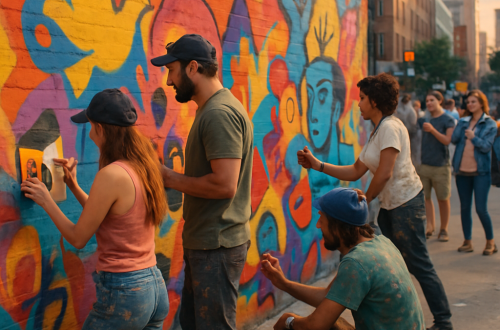The Surge of Upcycling: Turning Old Clothes into High Fashion
In the ever-evolving world of fashion, a refreshing trend is making significant waves: upcycling. This innovative approach transforms old, discarded clothes into high-fashion pieces, offering a stylish and sustainable alternative to the fast fashion that floods our markets and fills our closets. The surge of upcycling is not just a fleeting trend but a movement that reflects a broader shift towards environmental consciousness and ethical consumption within the fashion industry.
The Rising Popularity of Upcycled Fashion
The concept of upcycling in fashion is simple yet profound: take existing materials and garments and repurpose them into new, more valuable products without breaking them down completely. This process not only reduces waste but also decreases the demand for new raw materials, thereby minimizing the overall environmental impact of the fashion industry.
One might wonder why upcycling has gained such momentum in recent years. The answer lies partly in the growing awareness and concern over environmental issues like waste management and resource depletion. Consumers are increasingly seeking sustainable options that also offer uniqueness and personal expression in their clothing choices.
Personal Anecdote: A Journey Through Upcycling
My journey into the world of upcycled fashion began at a local thrift store, where I stumbled upon a vintage denim jacket adorned with colorful patches and embroidery. This jacket wasn’t just a piece of clothing; it was a statement of creativity and sustainability. It prompted me to explore how I could give my old clothes new life, leading me to experiment with various techniques from dyeing to deconstructing and reassembling different pieces.
Creative Techniques in Upcycling
Upcycling is as much about creativity as it is about sustainability. Techniques vary from simple modifications like adding patches or embroidery to completely deconstructing garments and reassembling them into entirely new forms. Designers often combine materials from multiple sources to create complex, layered effects that are both visually striking and entirely unique.
Interestingly, the process of upcycling can sometimes lead to the creation of garments that are more durable and high-quality than their original forms. This counterintuitive outcome challenges the traditional view that new is always better.
Upcycling and High Fashion: An Unlikely Match?
Initially, upcycling found its place within the realms of DIY enthusiasts and indie designers. However, as sustainability has become a pressing concern, even high-end fashion brands are embracing this trend. Luxury fashion houses like Gucci and Stella McCartney are incorporating upcycled materials into their collections, signaling a significant shift in how the industry perceives recycled products.
In my opinion, the integration of upcycling into high fashion not only elevates the value of reclaimed materials but also sets a powerful example for the rest of the industry. It demonstrates that style and sustainability can coexist, encouraging consumers to rethink their fashion choices.
The Economic Impact of Upcycling
Beyond environmental benefits, upcycling has significant economic implications. It promotes a circular economy, where materials are kept in use for as long as possible, extracting the maximum value from them while in use and then recovering and regenerating products and materials at the end of their service life.
This model not only helps reduce waste and environmental impact but also creates economic opportunities. Small businesses and independent designers, in particular, can capitalize on the niche market of upcycled fashion, differentiating themselves through unique, eco-friendly offerings.
Unconventional Observations: The Limitations of Upcycling
While upcycling is undoubtedly beneficial, it’s important to acknowledge its limitations. One might argue that upcycling, especially in high fashion, could inadvertently glamorize the idea of consumption by making it seem like any purchase is justifiable as long as it can be upcycled later. This perspective could potentially dilute the core message of sustainability that upcycling aims to promote.
Moreover, the scalability of upcycling poses another challenge. Transforming old clothes into high-fashion pieces is labor-intensive and may not always be feasible on a large scale without compromising the artisanal quality that makes each piece unique.
Looking Ahead: The Future of Upcycling in Fashion
According to me, the future of upcycling in fashion looks promising but requires a balanced approach. As the industry continues to grapple with its environmental impact, upcycling can serve as a bridge towards more sustainable practices. However, it should be part of a broader strategy that includes reducing production, extending the life of garments, and improving recycling technologies.
The surge of upcycling in fashion is a clear indicator of the industry’s potential for transformation. By turning old clothes into high fashion, designers not only challenge the throwaway culture prevalent in today’s consumer society but also redefine what it means to be stylish and sustainable. As this trend continues to evolve, it may well pave the way for a new era in fashion, where the value of garments extends far beyond the latest trends and delves into the realms of environmental responsibility and innovation.


